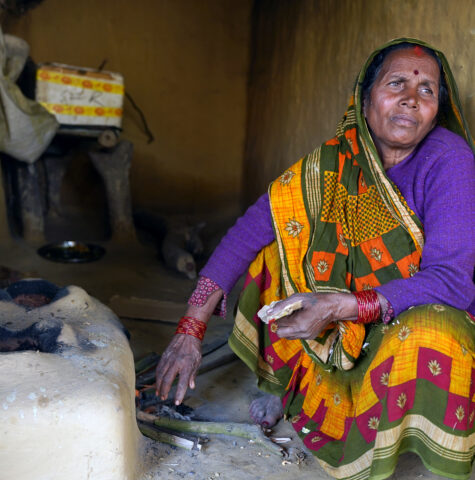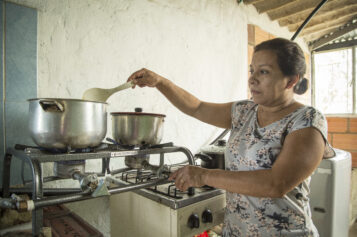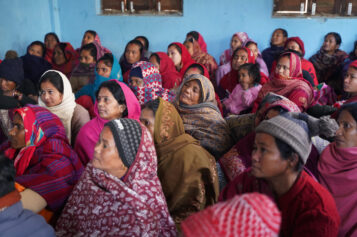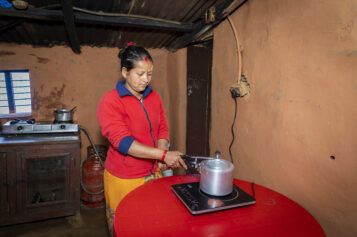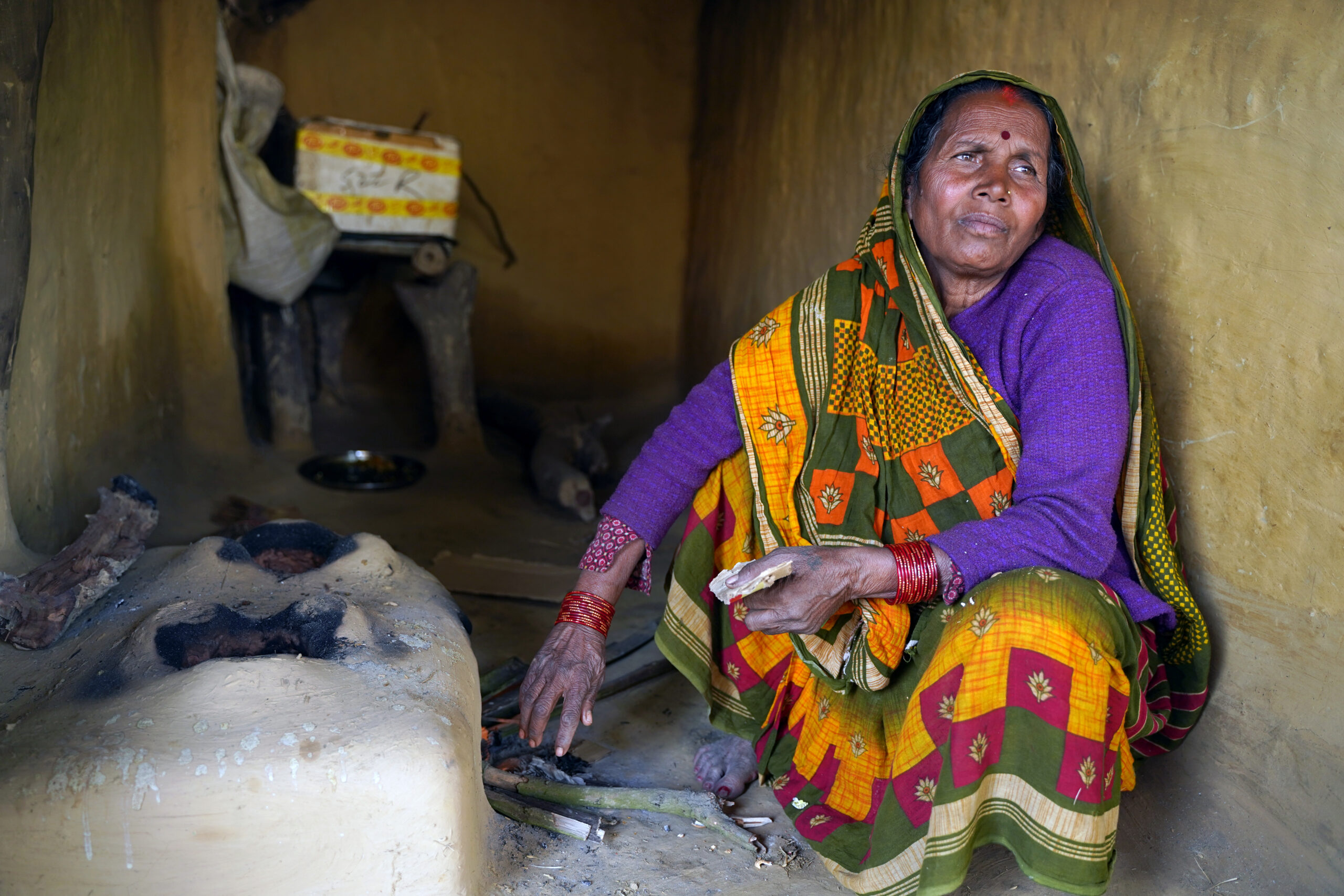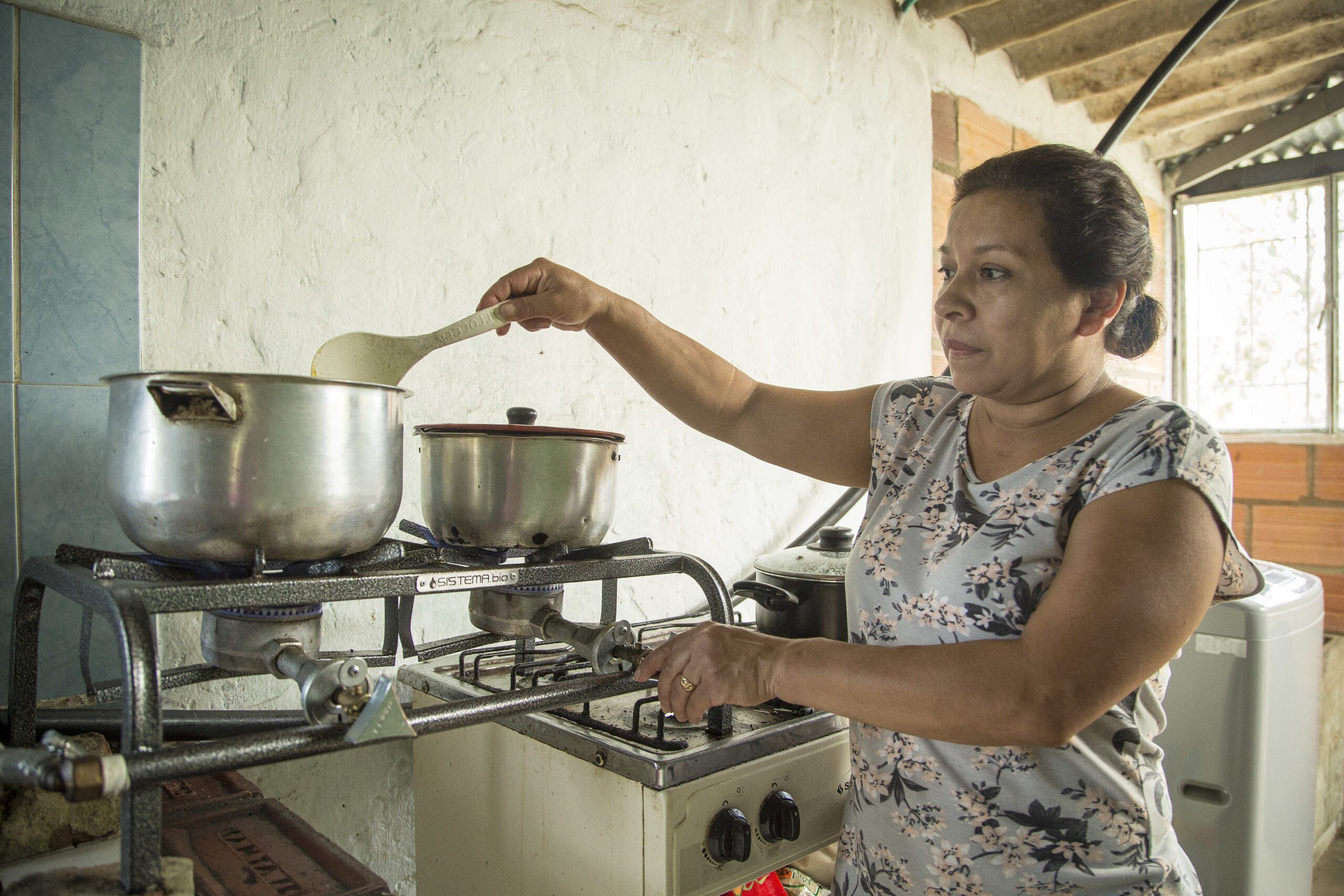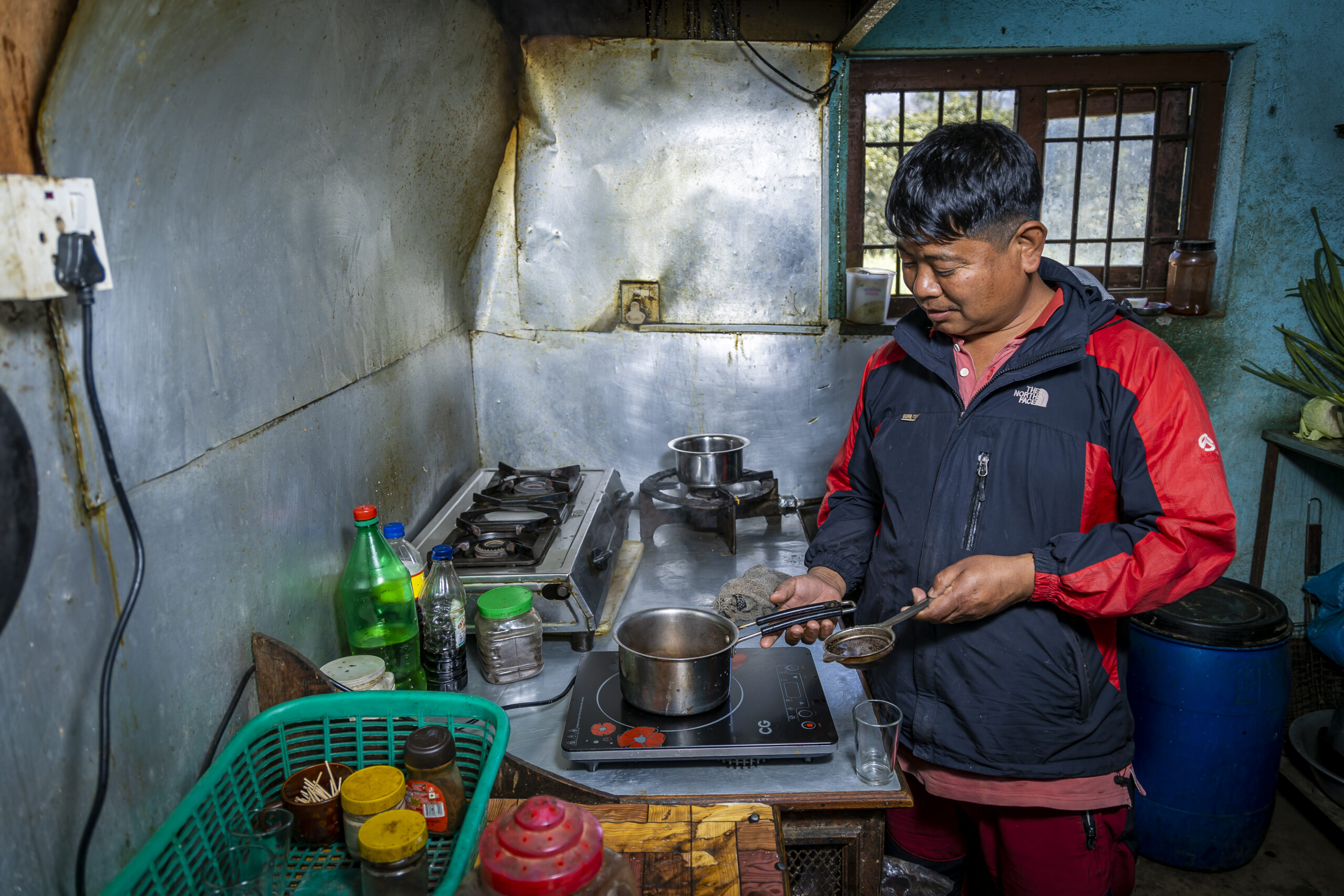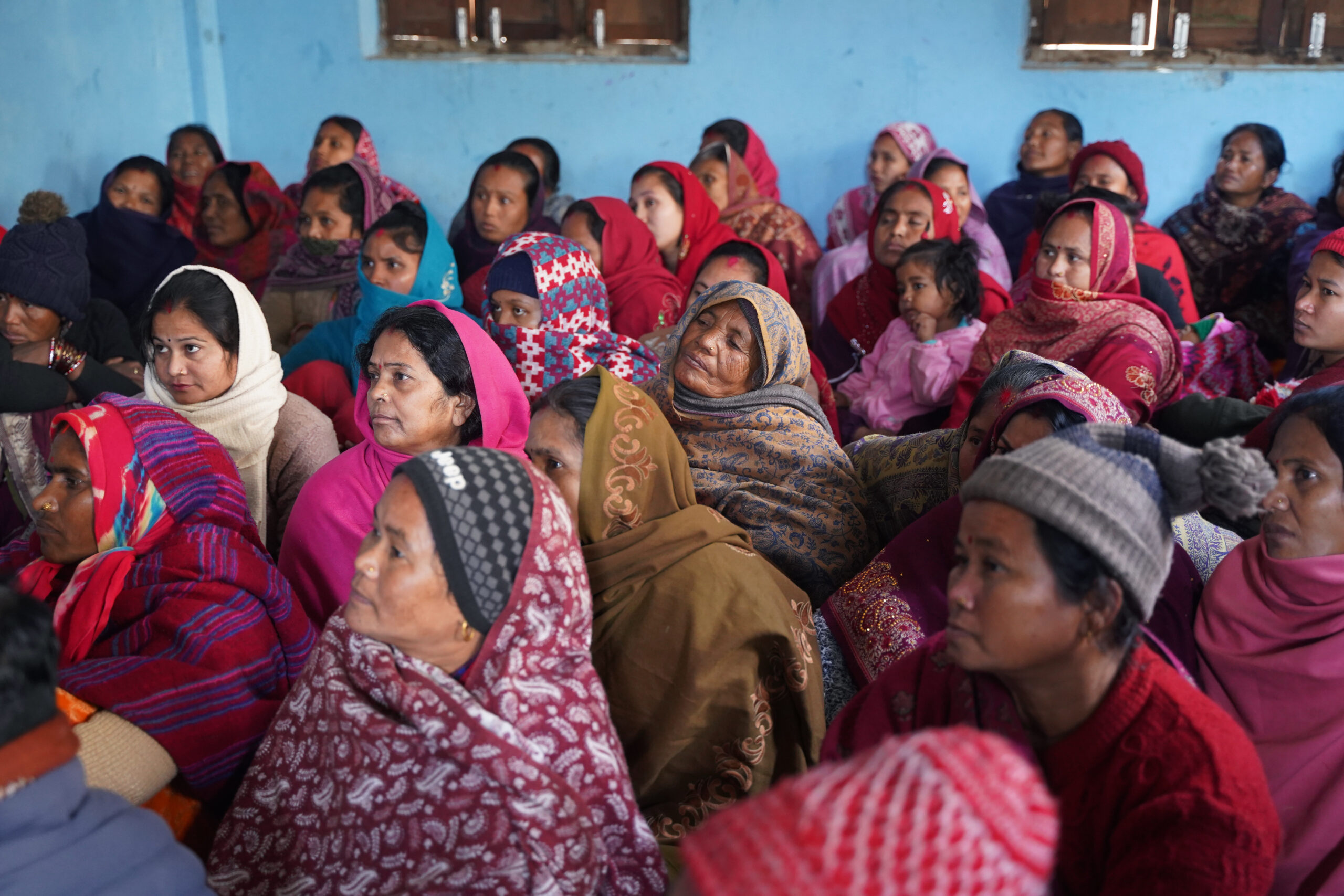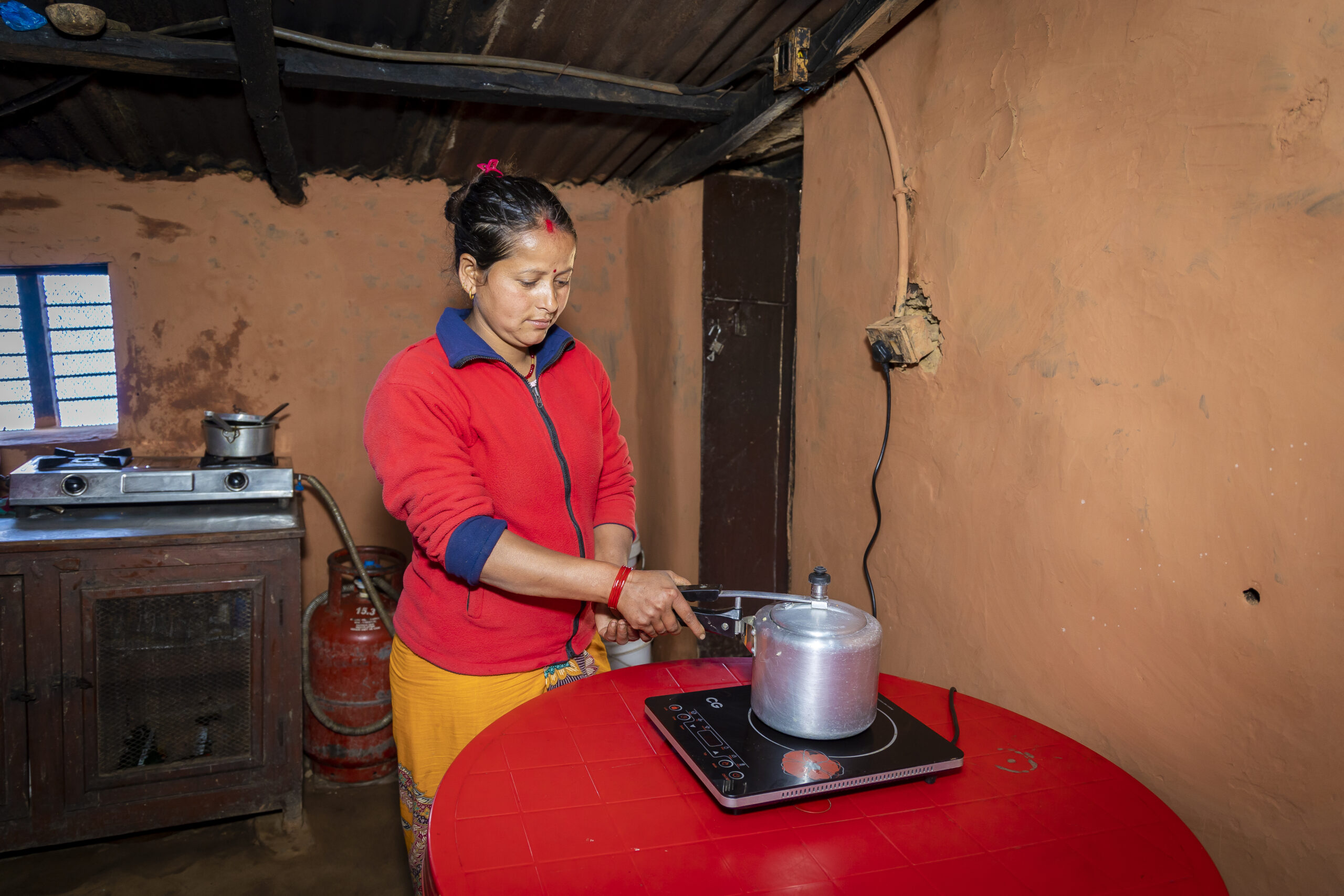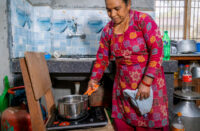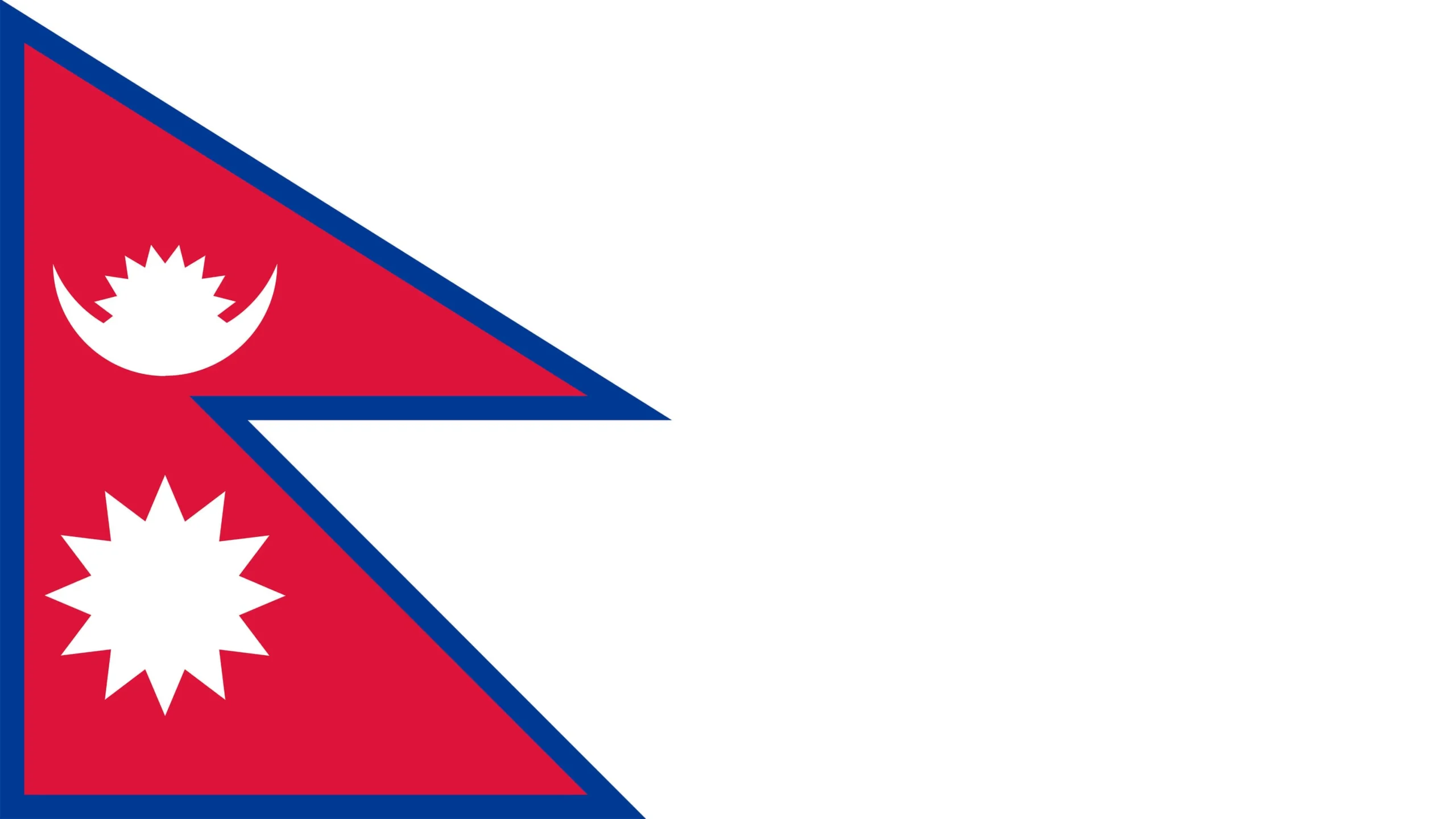
19.5M (65%)
Clean cooking population without access (WHO, 2021)
8
Active clean cooking ventures (Source: CCA)
1
Number of clean cooking RBF (Source: CCA)
The Government of Nepal (GoN) is committed to achieving universal access to clean cooking by 2030. The GoN has set ambitious targets to achieve this goal, including ensuring that 25% of households nationwide adopt electric cooking by 2030.
According to World Bank data, there is a high demand for clean cooking solutions in Nepal due to the health impacts associated with traditional cooking practices. However, only 35.2% of the population had access to clean fuels and technologies for cooking in 2021, up from 28.05% in 2015. There is also a significant urban-rural divide in access, with 63.4% of the urban population having access compared to just 22.1% of the rural population.
Click ‘Read more’ to explore the data from World Bank.
Click ‘Read more’ to explore the relevant aspects of Nepal’s Nationally Determined Contributions and other current policies that are relevant to clean cooking, including import duties.
Nationally Determined Contributions
Nepal’s enhanced NDC aims to leverage its hydropower potential to increase domestic renewable energy generation from 1,400MW to 15,000MW.11 The targets related to increased renewable energy production and replacement of LPG with ECs and biogas are synergistic with Nepal’s enhanced NDC targets for the clean cooking sector, which are: (1) use primarily EC in 25% of households by 2030, (2) install 500,000 improved cookstoves in rural areas by 2025, and (3) install 200,000 household biogas plants and 500 large scale biogas plants by 2025. Combined, these three targets will reduce cooking sector emissions by 11% and 23% by 2025 and 2030, respectively.
Tax and Tariff Data
This table shows Nepalese Duty and VAT for clean cooking items, as of 2023:
| Regional Trade Areas | Official designation | Tax or tariff | Tax rate (dutiable vs. duty paid) |
| SAFTA, SAPTA, SAARC, bilateral RTA with India | Electricity | MFN import duty | 0.0% |
| SAFTA, SAPTA, SAARC, bilateral RTA with India | Electricity | VAT | 0.0% |
| SAFTA, SAPTA, SAARC, bilateral RTA with India | Undenatured ethyl alcohol of an alcoholic strength by volume of 80 % vol or higher | MFN import duty | 30.0% |
| SAFTA, SAPTA, SAARC, bilateral RTA with India | Undenatured ethyl alcohol of an alcoholic strength by volume of 80 % vol or higher | VAT | 16.9% |
| SAFTA, SAPTA, SAARC, bilateral RTA with India | Ethyl alcohol and other spirits, denatured, of any strength | MFN import duty | 30.0% |
| SAFTA, SAPTA, SAARC, bilateral RTA with India | Ethyl alcohol and other spirits, denatured, of any strength | VAT | 16.9% |
| SAFTA, SAPTA, SAARC, bilateral RTA with India | Ethyl alcohol and other spirits, denatured, of any strength | Other taxes and tariffs | Rs. 10.00 Per ltr. |
| SAFTA, SAPTA, SAARC, bilateral RTA with India | Kerosene (Superior Kerosene Oil) | MFN import duty | Rs.12000 per kL |
| SAFTA, SAPTA, SAARC, bilateral RTA with India | Kerosene (Superior Kerosene Oil) | VAT | 0.0% |
| SAFTA, SAPTA, SAARC, bilateral RTA with India | Propane — Other | MFN import duty | Rs.15 per kg |
| SAFTA, SAPTA, SAARC, bilateral RTA with India | Propane — Other | VAT | 0.0% |
| SAFTA, SAPTA, SAARC, bilateral RTA with India | Butane | MFN import duty | Rs.15 per kg |
| SAFTA, SAPTA, SAARC, bilateral RTA with India | Butane | VAT | 0.0% |
| SAFTA, SAPTA, SAARC, bilateral RTA with India | LPG | MFN import duty | Rs.5 per kg |
| SAFTA, SAPTA, SAARC, bilateral RTA with India | LPG | VAT | 0.0% |
| SAFTA, SAPTA, SAARC, bilateral RTA with India | Fuelwood — Other | MFN import duty | Rs.5 per kg |
| SAFTA, SAPTA, SAARC, bilateral RTA with India | Fuelwood — Other | VAT | 0.0% |
| SAFTA, SAPTA, SAARC, bilateral RTA with India | Wood pellets | MFN import duty | Rs.5 per kg |
| SAFTA, SAPTA, SAARC, bilateral RTA with India | Wood pellets | VAT | 0.0% |
| SAFTA, SAPTA, SAARC, bilateral RTA with India | Wood briquettes | MFN import duty | Rs.5 per kg |
| SAFTA, SAPTA, SAARC, bilateral RTA with India | Wood briquettes | VAT | 0.0% |
| SAFTA, SAPTA, SAARC, bilateral RTA with India | Sawdust and wood waste and scrap, agglomerated in logs, briquettes, pellets or similar forms – Other | MFN import duty | Rs.5 per kg |
| SAFTA, SAPTA, SAARC, bilateral RTA with India | Sawdust and wood waste and scrap, agglomerated in logs, briquettes, pellets or similar forms – Other | VAT | 0.0% |
| SAFTA, SAPTA, SAARC, bilateral RTA with India | Charcoal, other wood | MFN import duty | Rs.15 per kg |
| SAFTA, SAPTA, SAARC, bilateral RTA with India | Charcoal, other wood | VAT | 0.0% |
| SAFTA, SAPTA, SAARC, bilateral RTA with India | Charcoal, of bamboo | MFN import duty | Rs.15 per kg |
| SAFTA, SAPTA, SAARC, bilateral RTA with India | Charcoal, of bamboo | VAT | 0.0% |
| SAFTA, SAPTA, SAARC, bilateral RTA with India | Charcoal, of shell or nut | MFN import duty | Rs.15 per kg |
| SAFTA, SAPTA, SAARC, bilateral RTA with India | Charcoal, of shell or nut | VAT | 0.0% |
| SAFTA, SAPTA, SAARC, bilateral RTA with India | Cooking appliances and plate warmers, for gas fuel or gas + other fuels | MFN import duty | Rs.10 per unit |
| SAFTA, SAPTA, SAARC, bilateral RTA with India | Cooking appliances and plate warmers, for gas fuel or gas + other fuels | VAT | 13.0% |
| SAFTA, SAPTA, SAARC, bilateral RTA with India | Cooking appliances and plate warmers, for liquid fuels | MFN import duty | Rs.10 per unit |
| SAFTA, SAPTA, SAARC, bilateral RTA with India | Cooking appliances and plate warmers, for liquid fuels | VAT | 13.0% |
| SAFTA, SAPTA, SAARC, bilateral RTA with India | Cooking appliances and plate warmers, including for solid fuels | MFN import duty | Rs.10 per unit |
| SAFTA, SAPTA, SAARC, bilateral RTA with India | Cooking appliances and plate warmers, including for solid fuels | VAT | 13.0% |
| SAFTA, SAPTA, SAARC, bilateral RTA with India | Other appliances — for gas or gas+ | MFN import duty | Rs.10 per unit |
| SAFTA, SAPTA, SAARC, bilateral RTA with India | Other appliances — for gas or gas+ | VAT | 13.0% |
| SAFTA, SAPTA, SAARC, bilateral RTA with India | Other appliances — for liquid fuels | MFN import duty | Rs.10 per unit |
| SAFTA, SAPTA, SAARC, bilateral RTA with India | Other appliances — for liquid fuels | VAT | 13.0% |
| SAFTA, SAPTA, SAARC, bilateral RTA with India | Other appliances — Other, including appliances for solid fuel | MFN import duty | Rs.10 per unit |
| SAFTA, SAPTA, SAARC, bilateral RTA with India | Other appliances — Other, including appliances for solid fuel | VAT | 13.0% |
| SAFTA, SAPTA, SAARC, bilateral RTA with India | Parts for cooking appliances and plate warmers | MFN import duty | Rs.10 per unit |
| SAFTA, SAPTA, SAARC, bilateral RTA with India | Parts for cooking appliances and plate warmers | VAT | 13.0% |
| SAFTA, SAPTA, SAARC, bilateral RTA with India | Microwave ovens | MFN import duty | Rs.10 per unit |
| SAFTA, SAPTA, SAARC, bilateral RTA with India | Microwave ovens | VAT | 13.0% |
| SAFTA, SAPTA, SAARC, bilateral RTA with India | Other ovens; cooking stoves, ranges, cooking plates, boiling rings, grillers and roasters — Induction stove | MFN import duty | Rs.1 per unit |
| SAFTA, SAPTA, SAARC, bilateral RTA with India | Other ovens; cooking stoves, ranges, cooking plates, boiling rings, grillers and roasters — Induction stove | VAT | 13.0% |
| SAFTA, SAPTA, SAARC, bilateral RTA with India | Other ovens; cooking stoves, ranges, cooking plates, boiling rings, grillers and roasters — Rice cooker | MFN import duty | Rs.10 per unit |
| SAFTA, SAPTA, SAARC, bilateral RTA with India | Other ovens; cooking stoves, ranges, cooking plates, boiling rings, grillers and roasters — Rice cooker | VAT | 13.0% |
Related Resources
Nepal has 20 cookstove projects registered in it. These projects have generated 0.6 million carbon credits to date.
Click ‘Read more’ to explore the dashboard.
There is one clean cooking RBF program that has operated, or is underway, in Nepal.
Click ‘Read more’ to explore the table of RBFs.
| Name | Lead | Status | Dates | Applicable Fuels | Fund size for clean cooking | Total fund size |
| RBF for low carbon energy access | EnDev | Completed | 2012-2020 | e-cooking, improved biomass, biogas | $15m | $55m |
N.B. Funding amounts may be split across multiple countries

